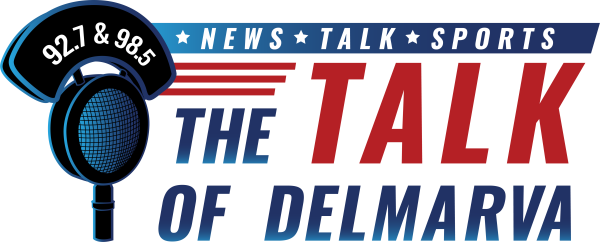DE Plover Population Sees Slight Decline, but Higher Nesting Success

Piping plover on Fowler Beach / Image by Dennis Murphy-DNREC
The piping plover season has ended in Delaware and DNREC officials say this year there was a decrease in adult pair numbers – but increased nesting success. The piping plover is a federally-listed threatened species and an Delaware state-listed endangered species. Until this year, pair counts in the First State had steadily increased since 2016 – with 31 pairs reported in 2023. The 2024 count was 24 nesting pairs – 7 at The Point at Cape Henlopen State Park and 17 at Fowler Beach on Prime Hook National Wildlife Refuge.
Additional information from DNREC:
The pair count stabilized at 24 in 2021 and 2022, but sharply increased to 31 in 2023.
“After low productivity in 2023, some former Delaware birds were reported breeding in other states in 2024, and ultimately we were back to hosting 24 pairs of plovers this year,” said Katherine “Kat” Christie, DNREC Coastal Waterbird biologist and leader of the Delaware Shorebird Project.
However, she said, prospects have become better for the piping plover’s recovery in Delaware and along the East Coast through partnerships between DNREC’s Division of Fish and Wildlife and Division of Parks and Recreation, the U.S. Fish and Wildlife Service (USFWS) and the U.S. Department of Agriculture’s Wildlife Services. “Partners are working together to better understand the drivers of population change and behavior, such as a study investigating piping plover chick and fledgling movement,” Christie said. “Trained biologists fit each plover with a unique combination of plastic leg bands allowing them to be identified using a spotting scope or binoculars.”
Such focus enabled DNREC and USFWS biologists to determine that piping plovers produced more fledglings in 2024 than in recent years – with 41 chicks raised to fledging, or flying age (25 days old) across the state. Last year, 29 chicks were raised to fledging age after multiple instances of chick predation and severe weather events. In 2024, Christie said, several nest and brood failures were attributed to suspected depredation. No plover pairs attempted to nest at Gordon’s Pond on Cape Henlopen this year, after a pair tried but ultimately failed to establish a nest there in 2023.
Productivity – calculated as fledglings per breeding pair – was the highest Delaware has seen since 2020. Record piping plover nest productivity (>2.0 fledglings per pair) was documented in Delaware from 2018 through 2020, but was poor in 2021 through 2023. In 2024, largely due to the markedly high fledging rates at Fowler Beach, piping plover nest productivity in Delaware was 1.71 fledglings per pair. This surpassed the recovery goal metric of 1.5 fledglings per pair established by the U.S. Fish and Wildlife Service in 1996 as part of the piping plover recovery plan. Delaware’s nesting productivity has not met that goal since 2020, even though fledgling counts for 2024 are comparable to counts during those record high productivity years due to increases in pair numbers. Productivity ranged from 0.8 to 1.4 fledglings per pair in 2021-2023.
Delaware beach-nesting bird species update:
In other beach-nesting bird species updates, two pairs of American oystercatchers nested at The Point at Cape Henlopen State Park, one pair at Delaware Seashore State Park, and one pair at Fowler Beach. Although three nest attempts successfully hatched, no American oystercatcher chicks fledged on monitored beaches in 2024. Least terns bred at The Point again this year, with 16 nesting attempts identified after no nests were seen in 2023. Biologists were able to confirm seven hatched least tern nests, though no fledging was confirmed from the colony at The Point. The least tern colonies at Fowler Beach had higher success than the previous years, with a high count of 62 incubating adults observed, and at least 66 fledglings confirmed.
These nesting areas remained closed through Oct. 1 to provide an undisturbed foraging area for southbound migrant shorebirds, including many fledglings making their way out of their natal grounds for the first time. During regular surveys, biologists observed adults and fledgling piping plovers, American oystercatchers, royal terns, ruddy turnstone, sanderling, semipalmated plovers, black-bellied plovers, lesser black-backed gulls and other species utilizing this valuable stretch of beach on the Delaware Bay.
For more information, visit de.gov/shorebirds or email deshorebirds@delaware.gov


